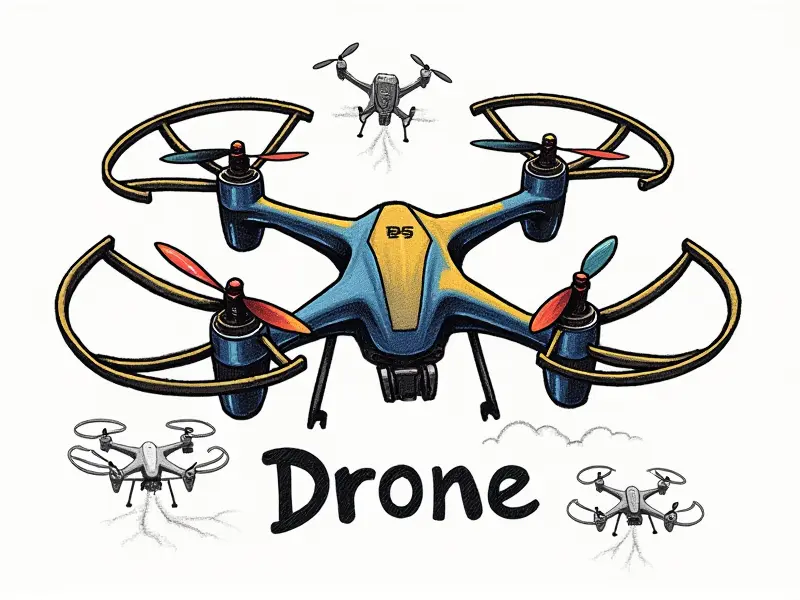What's propeller pitch?

What is Propeller Pitch in RC Drones?
Propeller pitch plays a crucial role in the performance and efficiency of remote-controlled (RC) drones. Understanding this concept is vital for hobbyists, enthusiasts, and professionals alike who want to optimize their drone's capabilities. In this article, we will delve into the basics of propeller pitch, its impact on various types of RC vehicles, and how to adjust it effectively.
Understanding Propeller Pitch Basics
The term "propeller pitch" refers to the distance a propeller would move forward through the air in one complete revolution if there were no slippage. It is measured in inches or millimeters and can significantly affect how an RC vehicle performs, especially when it comes to lift generation, thrust, and overall speed.
For instance, a higher pitch means more thrust but potentially less efficiency at lower speeds due to increased resistance. Conversely, a lower pitch allows for better maneuverability and acceleration but may limit top-end performance.
How Propeller Pitch Affects Drone Performance
The choice of propeller pitch directly influences the flight characteristics of an RC drone. Higher-pitched props generate more thrust at higher RPMs, which is ideal for achieving higher speeds or carrying heavier payloads. However, they require more power to start spinning and can be less efficient in terms of battery consumption.
Lower-pitched props are better suited for agile maneuvers and quick acceleration but may not deliver the same level of top speed as their high-pitch counterparts.
The Role of Propeller Pitch in FPV Racing
In the world of first-person view (FPV) racing, propeller pitch is a critical factor that can make or break a racer's performance. FPV pilots often seek to maximize acceleration and maneuverability without compromising on top speed.
Typically, racers opt for mid-range pitches that balance these requirements effectively. Adjusting the pitch slightly can fine-tune the drone’s responsiveness and agility during races.
Optimizing Propeller Pitch for RC Helicopters
RC helicopters rely heavily on propeller pitch for vertical takeoff, hovering, and maneuverability. The collective pitch of a helicopter's main rotor controls lift generation, while cyclic pitch adjustments enable directional control.
Properly setting the pitch ensures stable flight characteristics and efficient power usage. Pilots often experiment with different pitches to find the optimal balance between performance and fuel efficiency.
Propeller Pitch Explained: Quadcopter Tuning Guide
Quadcopters benefit from fine-tuning propeller pitch to achieve specific flight goals such as stability, speed, or payload capacity. By adjusting the pitch on each motor's propellers, pilots can optimize their quadcopter’s performance.
A higher pitch might be chosen for racing purposes to increase top speeds and acceleration, whereas a lower pitch would suit more relaxed flying scenarios where maneuverability is key.
Why Propeller Pitch Matters in RC Planes
In RC airplanes, propeller pitch influences the plane’s climb rate, cruising speed, and overall efficiency. A higher pitch can provide better climbing performance but may reduce cruise speeds due to increased drag.
Pilots often select a pitch that matches their flying style and aircraft type, ensuring optimal flight characteristics under various conditions.
Quick Guide to Adjusting Propeller Pitch
To adjust propeller pitch, follow these steps:
- Determine your goal: Decide whether you want to improve speed, maneuverability, or efficiency.
- Select the right tool: Use a propeller pitch gauge and wrench designed for your specific propellers.
- Measure current pitch: Accurately measure the existing pitch using a pitch gauge.
- Adjust as needed: Turn the propeller clockwise to increase pitch or counterclockwise to decrease it.
- Test and refine: Fly your RC vehicle and observe performance changes. Make further adjustments if necessary.
Mastering Propeller Pitch for Optimal Flight
Mastery of propeller pitch adjustment requires practice, patience, and a thorough understanding of how different pitches affect flight characteristics. Experimentation is key to finding the perfect balance between speed, efficiency, and maneuverability tailored to your specific needs.
The Impact of Propeller Pitch on Performance
Propeller pitch has a profound impact on an RC vehicle's performance across various metrics:
- Lift Generation: Higher pitches generate more lift but require higher RPMs to start spinning efficiently.
- Thrust and Speed: Increased pitch can boost top speeds by generating more thrust, though it may reduce acceleration capabilities.
- Battery Efficiency: Lower pitches are generally more efficient in terms of power consumption but sacrifice some speed potential.
Conclusion
Mastery over propeller pitch is essential for any RC enthusiast looking to enhance their vehicle's performance. Whether you're racing FPV drones, flying RC planes, or piloting helicopters and quadcopters, understanding how different pitches affect lift generation, thrust, speed, and efficiency can make a significant difference in your flight experience.
By carefully selecting and adjusting propeller pitch according to your specific needs, you can unlock new levels of performance and enjoyment from your RC hobby. Experimentation is key, so don't hesitate to try out different pitches and observe the results firsthand.

